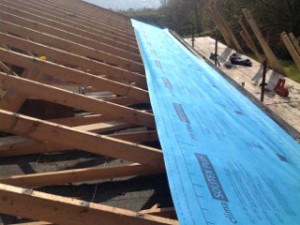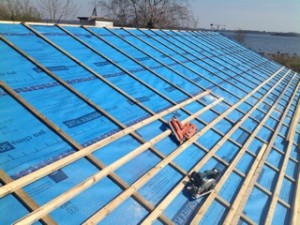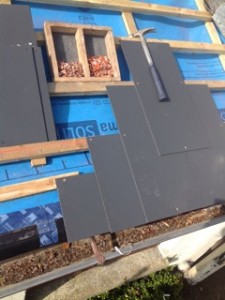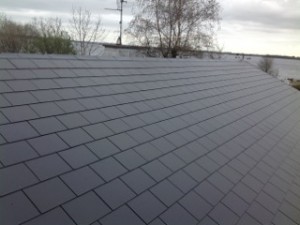With any roof – no matter what type – if you’ve got leaks in your roof, then you have a problem,” explains Donal Kilduff.
Leaks happen for any number of reasons. Truss roofs or cut roofs develop leaks due to flashing details that may not have been fastened properly during installation, cracked lead in valleys, damaged slates or tiles or poor detailing around roof penetrations. Leaks can result on flat roofs when single-ply membranes are installed with poor seams or if the membrane gets punctured with a sharp object or a cigarette butt on a warm day for example. Flat roofs are traditionally considered inferior to a pitched roof however properly designed and constructed a flat roof is an excellent solution for your project and offers an easy solution for achieving exceptional U-Values on low energy buildings. Pitched roofs, poorly designed and constructed are just a problematic as poorly designed and constructed flat roofs.
A common reason for a leaking pitched roof is an inadequate pitch for the selected roofing product. Some roof tiles for example are only effective above 25 degrees while others work well below 20 degrees. In the past slates were thought to be effective at 22.5 degrees and this was set as the minimum acceptable pitch. The min pitch for slating was changed from 22.5° to 25° in 2002. This came about due to the revisions in the code of practice ,ICP2: 2002 Irish Code of Practice for Slating and Tiling. The code of practice in use up until 2002 was ICP2: 1982 Irish Code of Practice for Slating and Tiling. The min pitch was changed in part due to changes in the climate and an increased knowledge on the performance of roof coverings. We deal with all kinds of roofing issues at Kilduff Construction and low pitched roofs require special attention. The most important thing to establish and decide upon is the correct roofing product for your roof. Pitch and exposure levels must be factored into the design solution. Failure to address these fundamental factors will ultimately result in a roofing failure.
“We had a problem with a leak in our slate roof during driving rain conditions. We called Donal Kilduff of Kilduff Construction. Donal examined the problem, researched and presented a designed solution with new slates and a specific roofing membrane which would solve the issue we were experiencing.
Photos of each stage of the project were emailed to us which was excellent as we were not on site and therefore we could monitor the work and progress remotely. The project was completed on time and we were very satisfied with the work done. We would recommend Kilduff Construction for any building services required”
Chris & Mary Furlong
07.05.15






